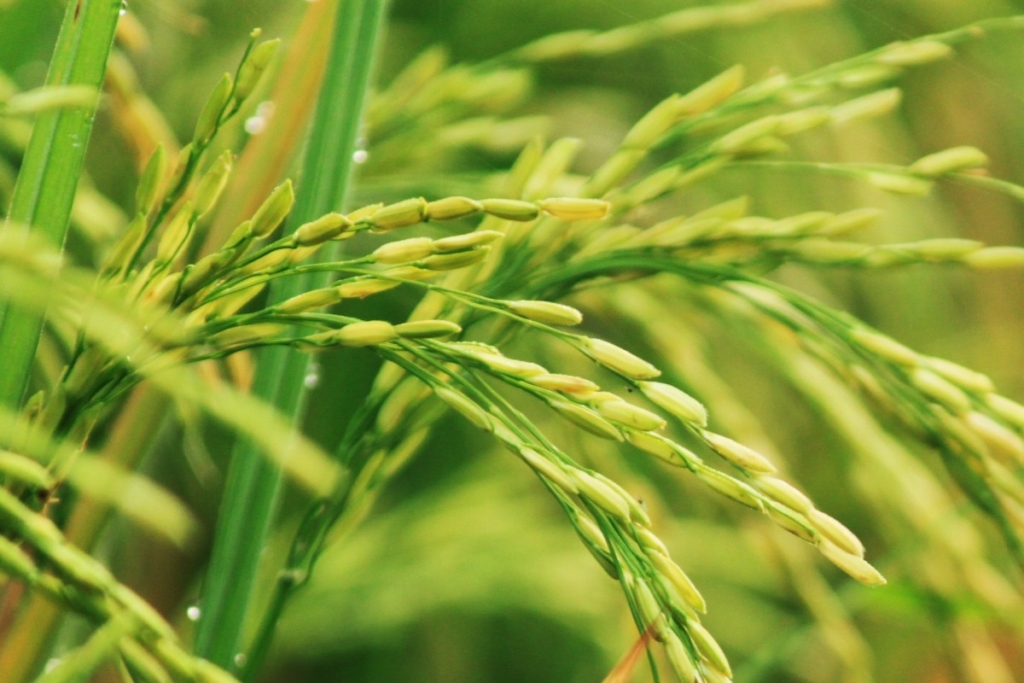 September is National Rice Month celebrating the harvest of rice, a staple consumed by nearly half of the world’s population. Rice consumption is especially strong in Asian and African countries, however is also common in the Americas.
September is National Rice Month celebrating the harvest of rice, a staple consumed by nearly half of the world’s population. Rice consumption is especially strong in Asian and African countries, however is also common in the Americas.
Rice has important social, religious, and cultural significance around the world. If you’re traveling abroad during National Rice Month, learning about these facts can help you start intelligent conversations with your colleagues and family members.
Asia
India and Thailand are the world’s leading exporters of rice, with the U.S. ranking third, according to the 2016 rice exports. So it’s no surprise that rice is an essential part of Asian cuisine. It is delicious steamed, stir-fried, boiled, or mixed – the possibilities are endless. It can be served sweet, savory, spicy, or salty. Numerous types of rice are available to accompany the appropriate meal.
Rice has significant social meaning. In Korea, rice is translated to ssal, but once cooked it is referred to as bap. When Koreans greet each other, they will often ask “Did you eat?” which may sound strange to Westerners but bap, or cooked rice connotes a meal and it is often used as a tool for socializing. In Korean culture, people usually share food, or bap with each other, which signifies friendship and fondness.
Rice also symbolizes fertility, luck, and wealth in Chinese culture. During Chinese New Year, there is a sticky rice cake called nian gao. It is considered good luck to eat nian gao because it symbolizes prosperity for the following year. The New Year greeting, Nian Gao Sheng translates to wish people advancement toward higher positions of prosperity.
Rice is considered highly sacred throughout Asia. In India, rice has a spiritual and ritual significance. It’s used in various Hindu rituals and also in some of the Hindu samskaras, or ceremonies that mark a major event in one’s life. Rice is also used in harvest festivals. In Southeast Asia, Dewi Sri is a rice goddess referred to as “Rice Mother” or “Rice Maiden.” There are numerous rituals that celebrate good harvest.
Africa
In sub-Saharan Africa, rice is the fastest growing staple food. Rapid urbanization in West Africa has increased the demand for rice instead of traditional staples. There are holidays such as “World Jollof Day” that celebrates Jollof – a dish composed of rice, tomatoes and onions – that you eat at parties, ceremonies, weddings and even funerals.
North America
North American exports supplied 9.6 percent of global rice exports followed by Europe and Latin America. The United States is a major exporter of rice, mainly produced in the South and in California. Its main markets are focused in Canada, Haiti, Japan, Saudi Arabia and Turkey.
Rice is more than a simple carbohydrate with a meal. In many parts of the world, rice embodies various social, cultural, and religious traditions. Wherever you may be across the globe, celebrate National Rice Month by understanding what goes behind the small grain.
Sharon Schweitzer and Sunny Kim co-wrote this post. Sharon Schweitzer, J.D., is a cross-cultural trainer, modern manners expert, and the founder of Access to Culture. In addition to her accreditation in intercultural management from the HOFSTEDE centre, she serves as a Chinese Ceremonial Dining Etiquette Specialist in the documentary series Confucius was a Foodie, on Nat Geo People. She is the resident etiquette expert on two popular lifestyle shows: ABC Tampa Bay’s Morning Blend and CBS Austin’s We Are Austin. She is regularly quoted by BBC Capital, Investor’s Business Daily, Fortune, and the National Business Journals. Her Amazon #1 Best Selling book in International Business, Access to Asia: Your Multicultural Business Guide, now in its third printing, was named to Kirkus Reviews’ Best Books of 2015. She’s a winner of the British Airways International Trade Award at the 2016 Greater Austin Business Awards.
Sunny Kim is a Fall 2017 Cross-Cultural Communication intern with Access to Culture. She is currently a junior journalism student at the University of Texas at Austin with a minor in Korean language and certificate in business. She is also the founder and president of UT Asian American Journalists Association. Her main focus is storytelling people’s diverse experiences relating to race and culture. Connect with her on Linkedin.
Photo Credit: Pxhere

Leave A Comment